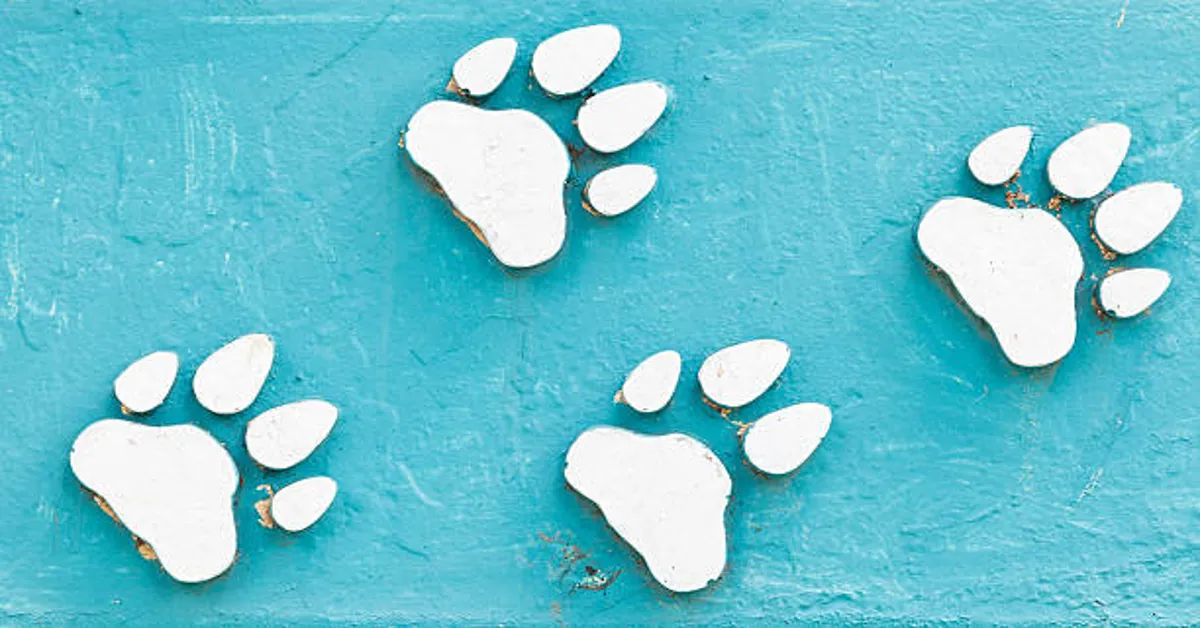A paw print may seem like a simple impression left by an animal’s foot, but in reality, it is a symbol, a record of movement, and a deeply emotional icon for countless people. Whether it appears on a muddy trail in the woods, as a carved emblem on jewelry, or as a tattoo on someone’s skin, the paw print connects us to the animal world in a way that is both personal and universal. This article explores paw prints in detail—covering their physical aspects, symbolism, cultural history, uses in art and design, scientific applications, and emotional impact.
Understanding What a Paw Print Is
A paw print is the visible impression made when an animal’s paw contacts a surface. This can occur naturally, such as when a dog or cat walks on soft ground, or intentionally, as when a paw is pressed into clay or ink to create a keepsake. Paw vary widely depending on species, size, gait, and surface type. For example, a bear’s print is large, broad, and shows long claws, while a cat’s print is compact, rounded, and clawless due to retractable claws. These differences allow trackers, biologists, and pet owners to identify specific animals.
A paw print generally contains:
- Toe impressions – most mammals with paws have four or five toes.
- Central pad print – the largest part of the paw that supports weight.
- Claw marks – visible in some species but absent in others.
- Stride spacing and depth – indicators of size, weight, and gait.
Symbolism of Paw Prints
1. Connection to Animals
Paw prints are often viewed as a physical reminder of an animal’s presence. They symbolize loyalty, companionship, and the unspoken bond between humans and animals. Pet owners frequently use paw to commemorate a beloved pet’s life or as a way to keep their presence close.
2. Journey and Exploration
Because paw prints indicate movement, they are associated with travel, exploration, and the pursuit of paths—both literal and metaphorical. In art, a series of prints may symbolize life’s journey.
3. Protection and Guidance
In some indigenous cultures, the image of a paw can serve as a protective charm or spiritual guide, representing the traits of the animal—strength, cunning, agility, or nurturing.
4. Identity and Heritage
Animal tracks have been used in heraldry, tribal designs, and family crests to represent lineage, totem animals, and regional wildlife.
Paw Prints in Cultural History
Ancient Use in Art
The earliest recorded use of prints dates back thousands of years to cave paintings and pottery. Early humans incorporated animal tracks into art, possibly as part of hunting rituals or storytelling. Clay artifacts from ancient civilizations sometimes bear intentional animal paw impressions, blending nature into human craftsmanship.
Folklore and Mythology
In folklore, prints have been used as omens or messages. For instance, in some European legends, unusual animal tracks near a home were considered signs of good luck, while in other traditions, they were warnings.
Totem and Tribal Significance
Many indigenous cultures use animal tracks, including prints, as symbols of clan identity, guidance in dreams, and spiritual lessons. The type of paw depicted often represents the qualities the group values—such as the wolf’s loyalty or the bear’s strength.
Scientific and Practical Uses
Wildlife Tracking
For biologists and conservationists, paw are essential for identifying species in the wild. Studying their shape, size, and depth can provide information about:
- Species and subspecies
- Approximate size and weight
- Gait and speed
- Health and injury
Law Enforcement and Forensics
In rare cases, paw are used in investigations involving wildlife poaching, livestock attacks, or endangered species monitoring.
Pet Identification
Paw prints can be used as part of pet records, especially in keepsakes or veterinary documentation.
Paw Prints in Modern Life and Design
Tattoos and Body Art
Paw tattoos are a popular form of self-expression. They may represent a specific pet, symbolize a spirit animal, or embody personal traits such as courage or freedom. Placement varies—from small, discreet ankle tattoos to large, detailed chest pieces.
Jewelry and Accessories
Designers frequently incorporate prints into pendants, bracelets, rings, and charms. These are often gifted to animal lovers or worn as a tribute to a pet.
Home Décor
Paw print patterns appear on rugs, blankets, wall art, and kitchenware, appealing to pet-friendly households and wildlife enthusiasts.
Logo and Branding
Many pet care companies, veterinary clinics, and animal welfare organizations use paw prints in their logos. It’s instantly recognizable and conveys compassion, care, and animal focus.
Creating and Preserving Paw Prints
DIY Keepsakes
Pet owners often make paw print impressions using:
- Ink Pads – for flat prints on paper.
- Clay Kits – to create raised, durable impressions.
- Paint Stamping – using safe, non-toxic paints.
Preservation Tips
To preserve a paw print:
- Store paper prints in a protective sleeve.
- Keep clay or plaster casts in a dry, cool location.
- Photograph natural prints before they are disturbed.
Emotional Value of Paw Prints
The emotional connection people feel toward prints cannot be overstated. For many, they are more than just marks—they are mementos of shared life. When a pet passes away, their print becomes a treasured keepsake, often paired with their name and date as a memorial.
Some people view prints as comfort symbols during grief, representing the continuing presence of a pet’s spirit. This is why prints are common in sympathy cards, memorial stones, and urn engravings.
Environmental Awareness and Paw Prints
Paw prints also serve as gentle reminders of the animals with whom we share our planet. They can raise awareness about endangered species, habitat loss, and the importance of wildlife conservation. For example, campaigns to protect tigers or polar bears sometimes feature print logos to emphasize their plight.
Common Paw Prints and Their Traits
| Animal | Distinguishing Features |
|---|---|
| Dog | Four toes, visible claws, oval shape. |
| Cat | Four toes, no claw marks, rounded pad. |
| Bear | Large pad, five toes, long claws. |
| Raccoon | Long, finger-like toes, resembles small human hand. |
| Fox | Small, narrow print, claws visible, symmetrical shape. |
Conclusion
Paw prints bridge the worlds of humans and animals. They are both practical identifiers in the natural world and deeply personal symbols in art, memory, and culture. Whether seen in the wild, worn as a piece of jewelry, inked as a tattoo, or treasured as a memento of a beloved pet, the print’s meaning runs deeper than its simple shape. It speaks of connection, respect, memory, and shared journeys—reminding us that we walk this earth alongside countless other beings, each leaving their own mark.
ALSO READ: Fourth Wing Characters: A Complete and In-Depth Guide
FAQs
1. What does a paw print symbolize in tattoos?
A paw print tattoo can symbolize loyalty, companionship, freedom, or a connection to a specific animal or pet.
2. How can I make a paw print of my pet at home?
You can use non-toxic ink, clay kits, or pet-safe paint to create lasting impressions on paper or in molded form.
3. Do all animals have paw prints?
Only animals with paws—such as dogs, cats, bears, and many mammals—leave paw prints. Hoofed animals leave hoof prints instead.
4. Why don’t cat paw prints show claws?
Cats have retractable claws, so unless they are running, hunting, or feeling threatened, their claws usually don’t touch the ground.
5. Can paw prints be used to identify wildlife?
Yes. Wildlife trackers and biologists use paw prints to identify species, estimate size, and understand movement patterns in the wild.









